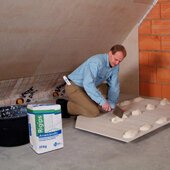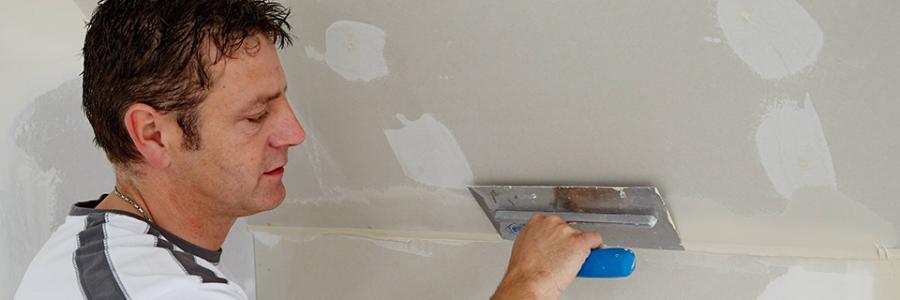 Dry plastering
Dry plastering
One very good way of panelling walls is to use the dry plastering process, in which the boards are fixed to a solid substrate using a so-called "bonding compound". Where it is not possible to fix the boards properly using a bonding compound, you can also fix Rigidur boards to wooden battens attached to the wall via wall plugs or onto roof profiles.
With the dry plastering process, it is important to ensure that a solid, non-shrink substrate is used, and that it is protected from rising damp/driving rain and frost-free. Any remaining mortar and waxes or formwork oil residues on the concrete must be removed before beginning the installation process. Fresh concrete which is still damp must be allowed to dry out first. Smooth surfaces (concrete) must be pre-treated with Rigips bonding mortar, while highly absorbent surfaces (aerated concrete) must be pre-treated with Rigips safety primer.
Note:
When insulating the inside of exterior walls, moisture protection must be ensured throughout the system. It should be decided on a case-by-case basis whether an additional vapour barrier needs to be installed. The advice of a specialist planner should always be sought.
>> More information on this topic can be found e.g. in the downloads to the left...
